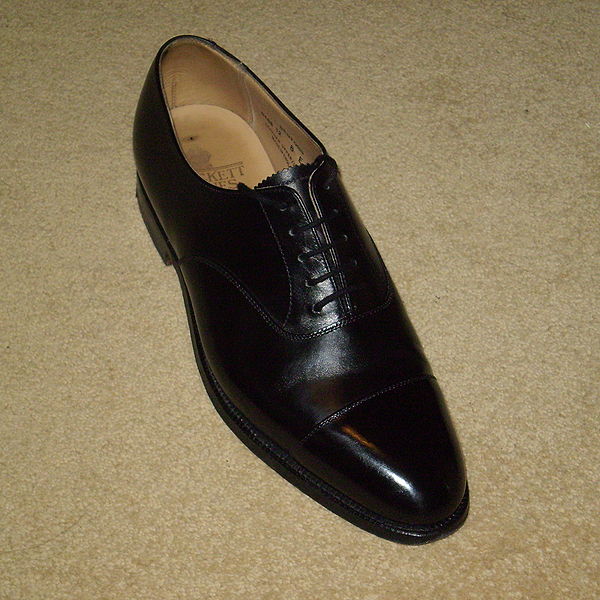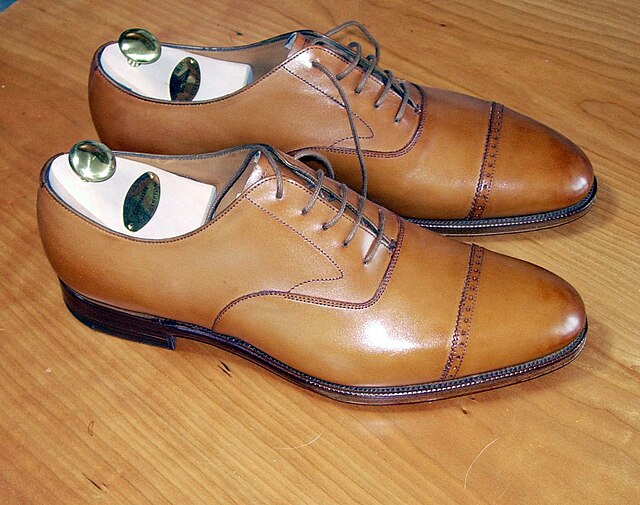An Oxford shoe is characterized by shoelace eyelets tabs that are attached under the vamp, a feature termed "closed lacing". This contrasts with Derbys, or bluchers, which have shoelace eyelets attached to the top of the vamp. Originally, Oxfords were plain, formal shoes, made of leather, but they evolved into a range of styles suitable for formal, uniform, or casual wear. On the basis of function and the dictates of fashion, Oxfords are now made from a variety of materials, including calf leather, faux and genuine patent leather, suede, and canvas. They are normally black or brown, and may be plain or patterned (brogue).
Men's cap toe oxford shoe Crockett & Jones
Evening Oxford shoes created by Alfred J. Cammeyer in 1891
Men's quarter brogue oxford shoes
Men's full brogue (or wingtip) oxford
Shoelaces, also called shoestrings or bootlaces, are a system commonly used to secure shoes, boots, and other footwear. They typically consist of a pair of strings or cords, one for each shoe, finished off at both ends with stiff sections, known as aglets. Each shoelace typically passes through a series of holes, eyelets, loops or hooks on either side of the shoe. Loosening the lacing allows the shoe to open wide enough for the foot to be inserted or removed. Tightening the lacing and tying off the ends secures the foot firmly within the shoe. The laces can be tied in different shapes, most commonly a simple bow.
Black shoelace
Three shoelaces tipped with three different aglets: copper, plastic, and brass
A knot squashes the cord and this stops the lace end passing through the knot
Ian's Secure Shoelace Knot used on a pair of safety boots








